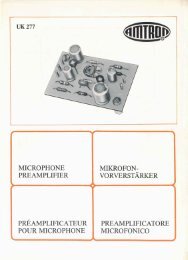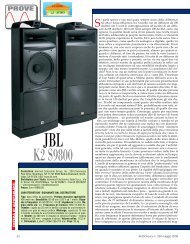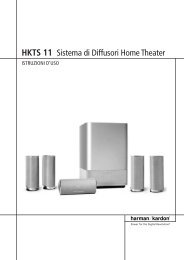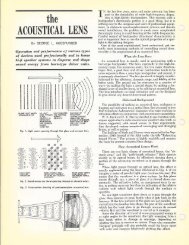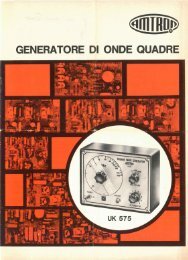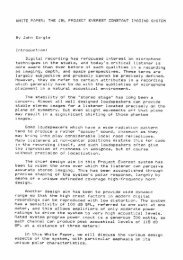MEASUREMENTS
MEASUREMENTS
MEASUREMENTS
Create successful ePaper yourself
Turn your PDF publications into a flip-book with our unique Google optimized e-Paper software.
Chrominance-to-Luminance Gain & Delay Inequalities<br />
VM700A Automatic Measurement<br />
Chrominance-to-luminance gain and delay errors can be<br />
measured by selecting ChromLum GainDelay in the VM700A<br />
MEASURE mode. Numeric results are given in this mode, and<br />
both parameters are simultaneously plotted on the graph. As<br />
shown in Figure 27, delay is plotted on the X axis and gain<br />
inequality is plotted on the Y axis. These measurements are<br />
also available in the VM700A AUTO mode.<br />
Calibrated Delay Fixture<br />
Another method of measuring these distortions involves use of<br />
a calibrated delay fixture. The fixture allows you to incrementally<br />
adjust the delay until there is only one peak in the baseline,<br />
indicating that all delay errors have been nulled out. The delay<br />
value can then be read from the fixture, and gain measured<br />
from the graticule. This method can be highly accurate, but<br />
requires the use of specialised equipment.<br />
• NOTES<br />
9. Harmonic Distortion<br />
If harmonic distortion is present, there may be multiple aberrations<br />
in the baseline rather than one or two clearly distinguishable<br />
peaks. In this case, nomograph measurement techniques are<br />
indeterminate. The VM700A, however, is capable of removing<br />
the effects of harmonic distortion and will yield valid results in<br />
this case. Minor discrepancies between the results of the two<br />
methods may be attributable to the presence of small amounts<br />
of harmonic distortion, as well as to the higher inherent resolution<br />
of the VM700A method.<br />
Figure 27. The ChromLum GainDelay<br />
VM700A MEASURE mode.<br />
display in the<br />
29



